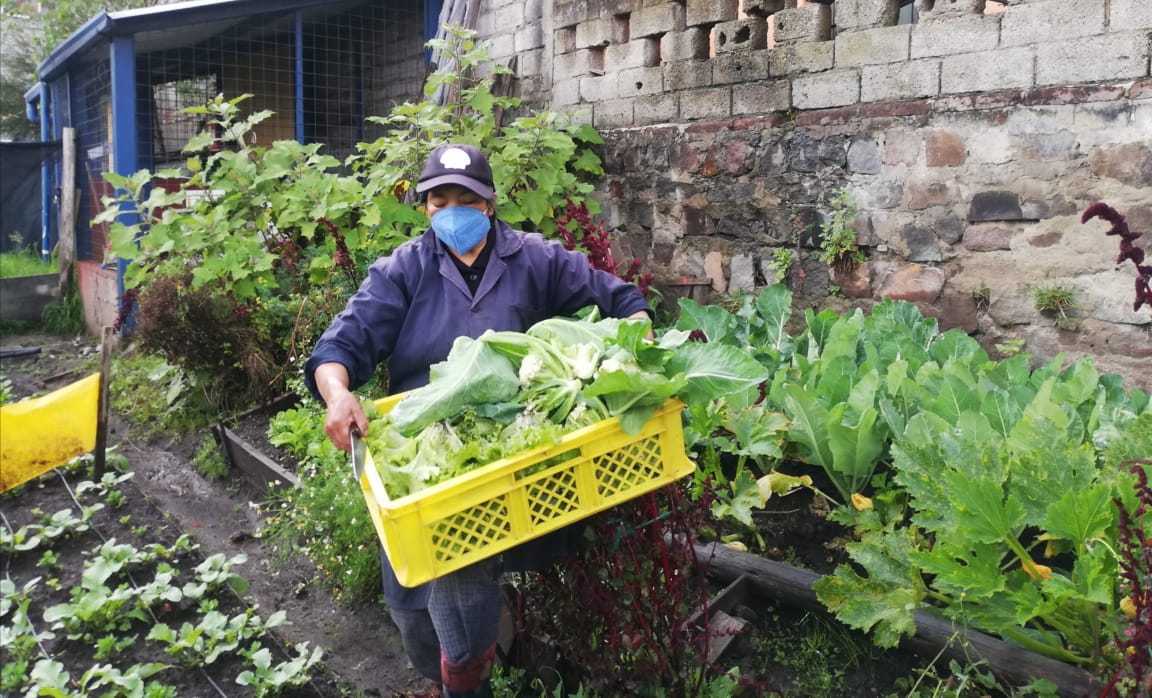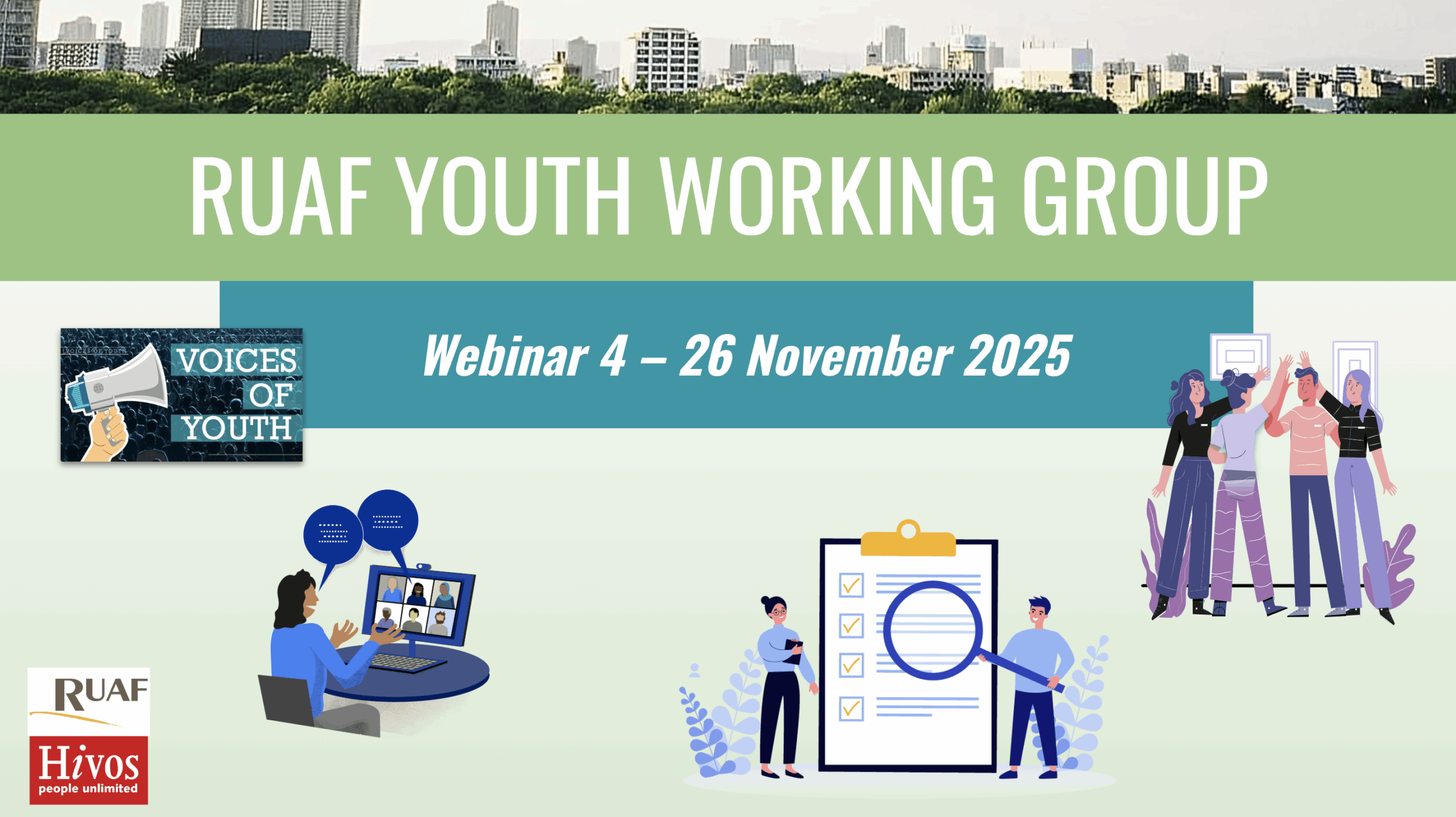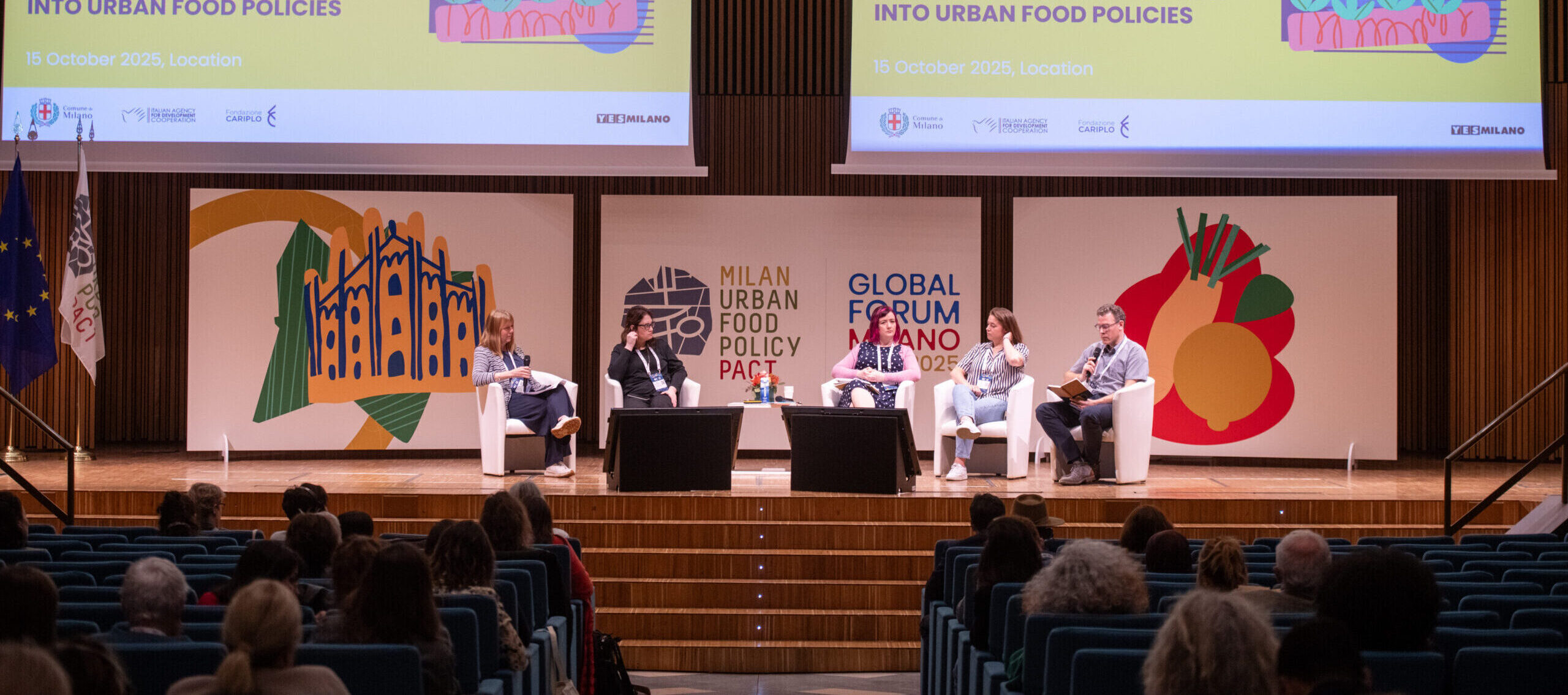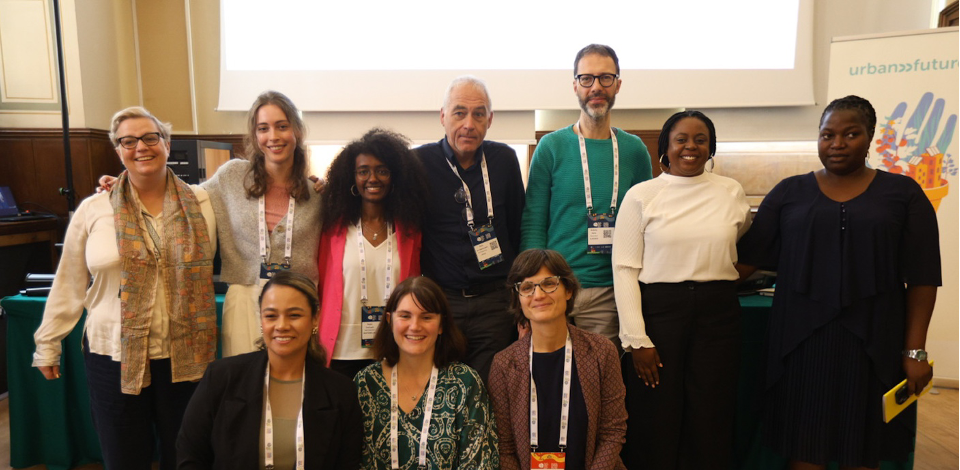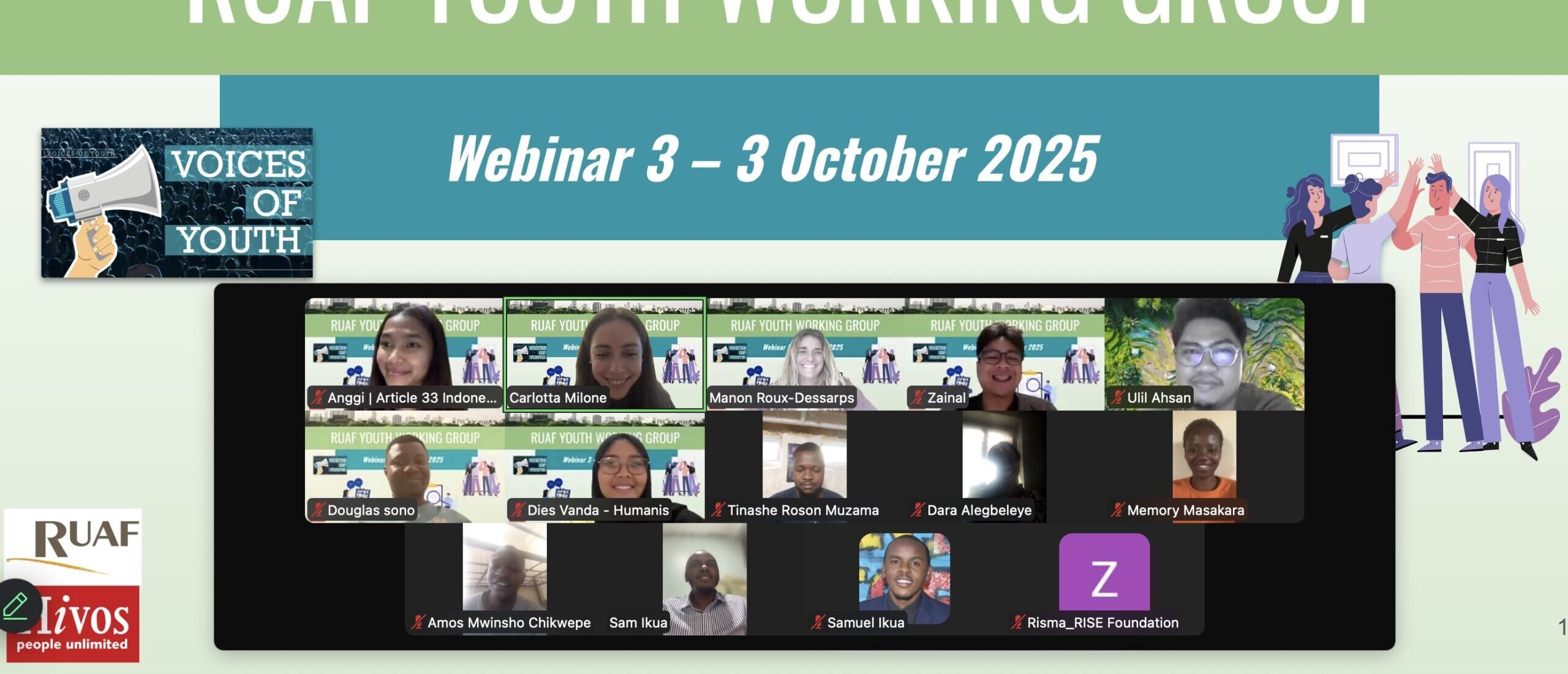Author: Alexandra Rodríguez, Head of the Participatory Urban Agriculture Project AGRUPAR, Economic Promotion Agency CONQUITO
With the spread of COVID-19, the world is in the throes of a global health crisis that will reshape the economy, society and politics, probably permanently.
There is widespread concern about the impact of the pandemic on the livelihoods and incomes of vulnerable people, reduced demand for services, and the disruption of production systems due to social isolation and distancing measures. The informal sector is experiencing particular disruption due to drastic emergency measures, often the result of decisions at a higher policy level (e.g. national) that do not solve problems at the local level.
People who are most vulnerable to COVID-19 include those with poor diet-related health problems. Similarly, lack of access to clean water is a structural problem that can aggravate health issues. The pandemic demonstrates the imperative of changing the logic that underpins current agrifood systems, through which they have become disassociated from the land and local culture (Altieri & Toledo, 2011; Holt-Gimenez, Altieri, & Rosset, 2006; Shiva, 2020). There is an urgent need for food systems transformation via multi-stakeholder platforms at various levels, which take into account the diversity and complexity of the problems, and solutions that enable affordability, accessibility, availability at all times, and nutritional quality of the food we consume (Haddad et al., 2020).
City Region Food Systems
Quito conducted an analysis of its food system as part of its collaboration with RUAF and FAO in the development of the City Region Food System (CRFS) framework (2015-2018). The comprehensive assessment and set of consultations highlighted the vulnerability of the city’s agri-food system, from its exposure to climatic, volcanic and seismic events and landslides, to its fragility in the face of human pressures caused by consumption patterns, agricultural production, new industrial and residential developments, as well as social, economic and political crises. To these, we must now add the crisis situation of all the world’s systems in the face of a pandemic.
The CRFS approach underlines the need to address food system change in a systemic manner. In Quito, a series of awareness-raising and multi-actor events were held, mobilising actors from across the food system and resulting in the formation of a multi-stakeholder platform, the Agro-Food Pact of Quito (PAQ), in 2017 and the signing of a Food Charter in 2018. Following the in-depth food system analysis, the PAQ proposed an action plan for a sustainable food system, including development of a food policy for the city and promoting changes in the way food is produced, processed, transported, and consumed, and how waste is managed. In 2019 the Municipality of Quito adopted the PAQ’s proposal, which seeks recognition as an ordinance and for the PAQ to be consolidated as a food council.
The Quito Food Strategy is a key instrument for including food in the city’s resilience planning. For this reason, it was considered important to carry out a vulnerability analysis of the local food system, with the support of the Water Land and Ecosystems Progamme of CGIAR and RUAF. This assessment threw up new and interesting insights. It led the city to acknowledge the need for a Resilience Strategy for the Quito Food System, covering cover multiple scales (from the neighbourhood to the global), taking an integrated approach to the various dimensions of food security and links within the food system), and identifying weaknesses that must be addressed to build resilience.
Action in the COVID-19 crisis
Dealing with the effects of the COVID-19 crisis on Quito’s food system requires both short-term and sustained, long-term action. There is a need to consider the role urban agriculture can play in community development and in strengthening social and economic cohesion through proximity-based initiatives, environmental sustainability and responsible consumption. Community cooperation, solidarity and social interactions also need a re-think, and approaches to municipal planning that favour physical distancing or low contact will have to be developed.
There is a need for more versatile systems, that have greater capacity to adapt to new global and local circumstances — especially social systems. The different scales of the agri-food system (neighbourhood, district, municipal or metropolitan, national and global) each have their own dynamic, actors, relationships, problems and solutions that must be addressed in a specific way, even thought there are connections between the scales (Jácome et al. 2020).
The local government in Quito has taken several measures to ensure food supply to the city during the COVID-19 crisis. These include:
- improving operation of the wholesale market and retail distribution;
- introducing controls on prices and on speculation for financial gain;
- regulated shopping hours at municipal markets;
- adoption of bio-protection measures for all parties;
- partnerships with the private sector to enable neighbourhood shops to re-open (currently only 45 per cent of shops are open);
- establishing shelters for the homeless (many of whom are Venezuelan migrants);
- strict controls on informal sales (47% of Ecuador’s workforce are in informal jobs, INEC 2020);
- special permits allowing food transportation vehicles to circulate during the lockdown (alongside vehicles for health workers, police, fire service, security, and basic services), as the general population can use vehicles only on one day per week and at restricted times;
- delivery of food to vulnerable people who are registered users municipal social programmes.
The geographic information system (GIS) of Quito’s food system, generated with the support of RUAF and WLE in 2018, have been very helpful for visualising the problem of food during the crisis, and formed the basis of maps that allow the municipality to target assistance where it is needed most. Similarly, Quito’s participation in a pilot project for the indicators of the Milan Urban Food Policy Pact (MUFPP) in 2019 helped the city to understand the need to tackle the COVID-19 emergency within the existing agenda of adopting sustainable diets and creating healthy food environments while improving rural-urban linkages.
Private enterprise has played a role in the donation and delivery of food rations, in partnership with the municipality, the Food Bank of Quito and other humanitarian aid organizations. Meanwhile, the response of social movements has been particularly strong, especially in enabling the direct sale of food from production areas to urban households through weekly delivery baskets. Such efforts make a significant contribution to addressing mobility problems.
One of the measures that the local government has adopted to avoid crowds is the restriction of use of public spaces, such as parks and municipal buildings, including the sale of food. This has affected the agro-ecological fairs (Bioferias) of Quito, where urban farmers usually sell their surplus produce. However, the restriction has led to a re-think in the way produce is commercialised, focusing it more on the neighbourhood and surroundings, when urban farmers’ networks can overcome transportation problems for home delivery of baskets. In this way, urban agriculture has been fundamental for feeding vulnerable families and poor neighbourhoods — as, indeed, it was envisaged in the Resilience Strategy of the Quito Food System.
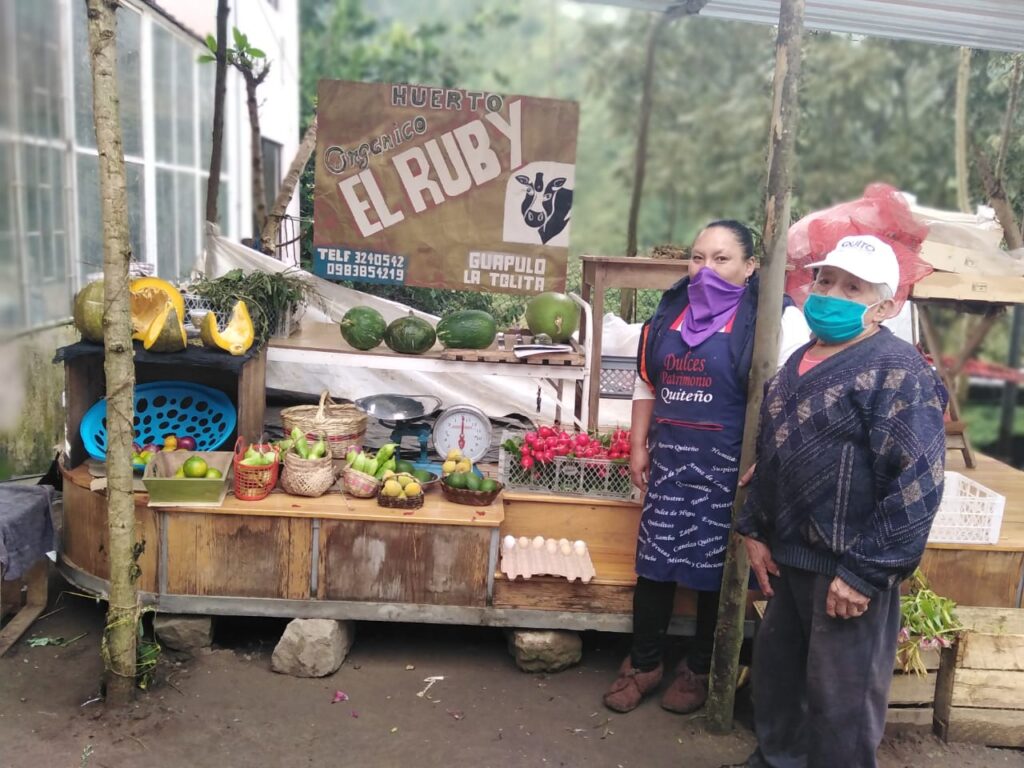
Urban and peri-urban gardens to the rescue
In accordance with the proposals in the Resilience Strategy of the Quito Food System, the city’s urban/peri-urban gardens have offered solutions to the food provisioning problems caused by COVID-19 at various scales, but all emphasising healthy, uninterrupted, and diverse food for producing families. Surplus produce has been sold via three channels:
a) Occasional sales as crops are ready for harvest (a few bundles of radishes, a few kilos of tomatoes or potatoes, a couple of heads of broccoli, cabbage, lettuce, a chicken, among others).
b) Weekly sale of baskets of 10 – 15 seasonal varieties, possibly including chicken, pork or eggs, to families from the neighborhood or from nearby areas; the transaction takes place in the garden.
c) Sale of a fixed quantity and selection of produce via collaborative supply chains. Transactions are made through a third party, who establishes contacts with consumers, puts together baskets by collating surplus produce from various producers, and delivers them to homes.
Quito’s urban gardens have a production capacity 1.35 million kg of healthy food each year, of which 57% (769,000 kg) is consumed by producers and their families and 43% (581,000 kg) sold via various short supply chains. Each week, about 11 tons of fresh and healthy food are destined for the city’s most vulnerable neighborhoods.
The diversification of distribution channels has helped to improve the resilience of the food system, has forged more direct relationships between producers and consumers, and has reminded people that they need to consume a significant quantity of fruits and vegetables every day preferably agro-ecological (at least those who are aware of urban-rural linkages and the right to healthy food). The COVID-19 pandemic has undoubtedly facilitated the future transformation of e-commerce platforms in the agricultural sector, and the emergence of collaborative economy ventures.
During the crisis, vulnerable people face the loss of household income that would normally be spent on food. This issue requires serious, rapid attention. For many others who live in ‘food deserts’ or ‘food swamps’, who have mobility issues and/or limited time, accessing supermarkets has also become a major concern. Even for those with sufficient economic resources, food has become a priority. As part of the COVID-19 response, urban agriculture mitigates the effects on food security and people’s livelihoods.
The pandemic has revealed the vulnerability of the world’s essential systems, and the fragility of the socio-ecological order. Without a doubt, COVID-19 is a call to humanity to rethink our highly consumerist, capitalist development model and the ways in which we relate to nature.
References
Altieri, M. A., & Toledo, V. M. 2011. The agroecological revolution in Latin America. CLACSO, 163.
Haddad, L., Fanzo, J., Godfrey, S., Hawkes, C., Morris, S., & Neufeld, L. (2020). COVID-19 food and crisis systems: addressing threats, creating opportunities. Retrieved April 5, 2020, from https://www.gainhealth.org/media/news/covid-19-crisis-and-food-systems-addressing-threats-creating-opportunities?fbclid=IwAR25sSlPM0EDNKyTUkTWbPQFCyiOKQTeO_xJOOstZAq0IHzRQs1uxD2PaaM
Holt-Gimenez, Altieri, & Rosset, 2006 – Holt-Gimenez, E., Altieri, M. A., & Rosset, P. (2006). Diez razones contra la nueva “Revolución Verde” de Rockefeller y Gates. Recuperado 28 de abril de 2020, de https://vientosur.info/spip.php?article360
INEC 2020, https://www.ecuadorencifras.gob.ec/empleo-en-el-sector-informal/. Recuperado 28 abril 2020.
Jácome, D., Santandreu A., Paredes, D., Rodríguez, A., Pinto, N. (2020) Resilience Strategy of the Quito Agrifood System. RUAF – WLE.
Shiva, 2020 -Shiva, V. (2020). Recuperar la tierra, nuestra comida y nuestra cultura. Recuperado 28 de abril de 2020, de https://oplas.org/sitio/2020/03/26/vandana-shiva-recuperar-la-tierra-nuestra-comida-y-nuestra-agricultura/?fbclid=IwAR01ENTzlAlWgKBjsHbyrcRuGJEFZv3sMHBiDTgortDsBUZApBFJaBYoDpY

